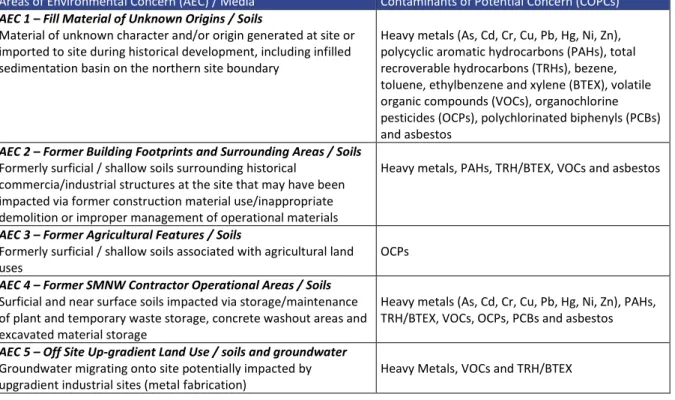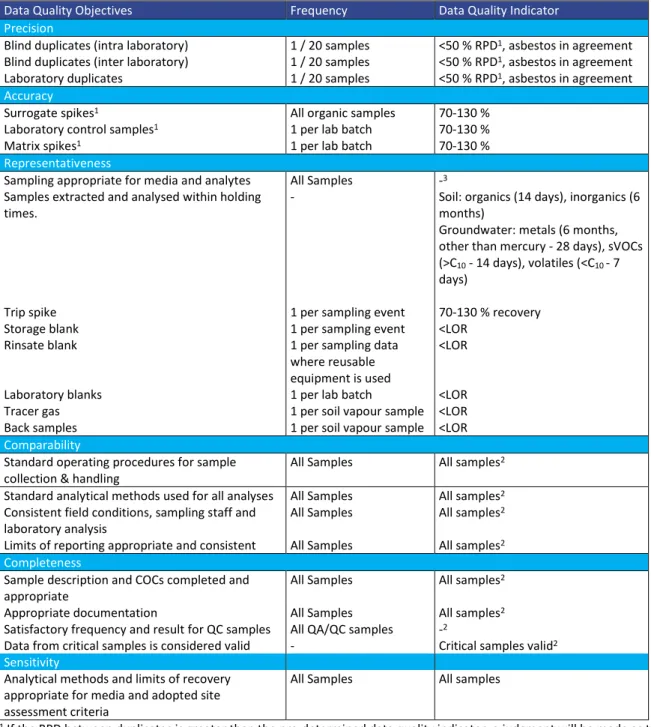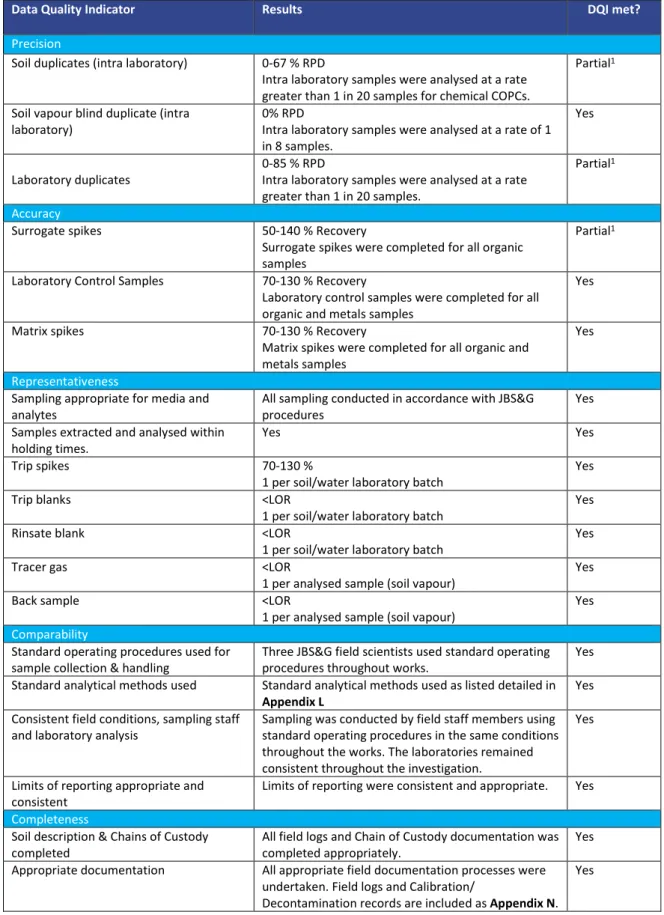The site is located at the corner of Norwest Boulevard and Brookhollow Avenue (Figure 1) and occupies an approximate area of 9,402 m2, as shown in Figure 2. A two-level basement is proposed over most of the site footprint. a depth of approximately 7 m below ground level (bgl), based on buildings and the public domain. The site is proposed to be developed for a combination of commercial uses: office space, retail, business services and short-term accommodation, consistent with the current zoning of "B7-Business Park" under the Hills Local Environmental Plan 2019 (Council 20191).
JBS&G has prepared a soil pollution assessment report in accordance with the requirements of the State Environmental Planning Policy No. 55 – Land Remediation (SEPP55) to assess whether the site is suitable or can be made suitable for the proposed land uses. The scope of work undertaken for the investigation included assessing the use of the historic site through a desktop review of available data, an inspection of the site and surrounding land uses. No significant site contamination issues were identified by the investigation and as such, the site is considered suitable for the proposed commercial development, including here.
Based on this, there is no need to manage the possible presence of ASS during or after the site renovation; and.
Introduction
- Introduction and Background
- Objective
- Scope of Work
- Summary of Recent Works and Public Domain Information
Review of the environmental setting, including an overview of topography, geology, hydrology, hydrogeology and meteorology of the site and surrounding areas;. Development and documentation of the SAQP, with data quality objectives (DQOs) for the DSI in accordance with relevant EPA guidelines;. Conducting a field investigation program that includes sampling of soil, groundwater and soil vapor at relevant locations across the site;.
Prior to this assessment, two development applications for major civil construction and infrastructure works associated with the Sydney Metro Northwest (SMNW) Project were previously approved and implemented within and adjacent to the site. North West Rail Link Major civil construction works (critical state infrastructure project – SSI-5100) – including major earthworks, tunnel/station excavations and above ground infrastructure; and. Based on communication with the client and review of Proximity Map images discussed further in Section 3.2, it is understood that works that took place on site under SSI-5100 and SSI-5414 include construction set-up, material import, material export and water treatment involved.
JBS&G Australia Pty Ltd Rev 1 4 has been informed that bulk materials have not been imported to the site and placed permanently, with the current site areas approximately as they were prior to the SMNW project works.
Site Condition and Surrounding Environment
- Site Identification
- Site Condition
- September 2019
- June 2021
- Surrounding Land Uses
- Topography
- Geology and Soils
- Acid Sulfate Soils
- Hydrology
- Hydrogeology
- Meteorology
A metal fabrication business was located next to the entrance to the site across Brookhollow Avenue. The nearest environmental receptor is Strangers Creek 200 m north of the site, as discussed further in Section 2.7. Review of Spatial Information Exchange Viewer, LPI (20154) regional topographic maps indicated that the site is in a region characterized by gently rolling landforms.
The site is located mid-slope on a northwest-facing slope that falls overall to Strangers Creek in the north of the site. The remaining site surface footprint consists of unsealed exposed soil and gravel fill, most of which appears to have been introduced to the site as part of the SMNW works. A review of the registered borehole information indicated that there were 5 registered boreholes within a 500m radius of the site.
The PB survey (201510) prepared for the Norwest site of the SMNW project provided the following information regarding the hydrogeological position of the area surrounding the site.

Site History
- Historical Titles
- Aerial Photographs
- EPA Records
- Department of Defence
- Australian and NSW Heritage Register
- Planning Certificates
- Summary of Site History and Integrity Assessment
O5.3: Excavated material suitable for on-site reuse may be transported from one part of the site or the Sydney Trains rail corridor or Sydney Trains recycling facility by road to another part of the site in accordance with Condition O5.4. Reporting conditions listed in Section 6 of the EPL state that the licensee must complete and provide to the EPA an Annual Return. A search of the Australian Heritage Trust database and the NSW Heritage Inventory was undertaken, and records are included in Appendix K.
A search in the immediate vicinity of the site did not reveal any objects of state or national importance. JBS&G applied for and obtained planning certificates from the Council issued under section 10.7 of the Environmental Planning and Assessment Act (1979). After the completion of the SMNW project works in 2019, the site was empty and unused.
Based on the range of sources and the general consistency of the historical information, it is considered that the historical assessment has an acceptable level of accuracy with respect to the potentially contaminating activities historically occurring at the site.
Previous Investigations
Conceptual Site Model
- Potential Areas and Substances of Environmental Concern
- Potentially Contaminated Media
- Potential for Migration
- Potential Exposure Pathways
- Receptors
- Preferential Pathways
Potential dermal and oral contact with degraded soils and groundwater as present at shallow depths and/or accessible by future service excavations over the entire extent of the site; and/or. Current commercial employees who will need to visit the site prior to and during redevelopment (including construction workers, consultants, planners, etc.); Site ecological receptors are limited to species established in rarely visited landscaped gardens.
Off-site ecological receptors can potentially be affected by surface water, groundwater, and windblown dust migrating from the site. For the purpose of this assessment, preferential pathways have been identified as natural and/or man-made pathways that result in the preferential migration of COPC as liquids or gases. JBS&G Australia Pty Ltd Rev 1 17 Sub-surface services will be present as part of the site redevelopment, throughout the site.
Priority routes are also important in assessing potential off-site sources of COPC.
Sampling Analysis and Quality Plan
Data Quality Objectives
- State the Problem
- Identify the Decision
- Identify Inputs to the Decision
- Define the Study Boundaries
- Develop a Decision Rule
- Specify Limits of Decision Error
- Optimise the Design for Obtaining Data
The study boundary includes the extent of the area as shown in Figure 2 and Figure 3 and detailed in Sections 2.1 and 2.2. The vertical extent of the survey included the maximum depth of the deepest borehole (9.0 m bgl). Statistical analyzes of the data in accordance with the relevant guidance documents are undertaken, if necessary, to facilitate decisions.
And: the 95% upper confidence limit (UCL) of the mean concentration for each analyte must be below the adopted site criterion. Assessment of the presence of aesthetic problems with respect to the adopted exposure scenarios was made with respect to the definition in NEPC (2013). Were mobile site media (groundwater, surface water, or soil vapor) present at the site near identified sources such that they may be affected and facilitate the transport of the impacts; and.
Sensitivity – expresses the applicability of the chosen laboratory methods, including the limits of reporting, in producing reliable data in relation to the accepted criteria.
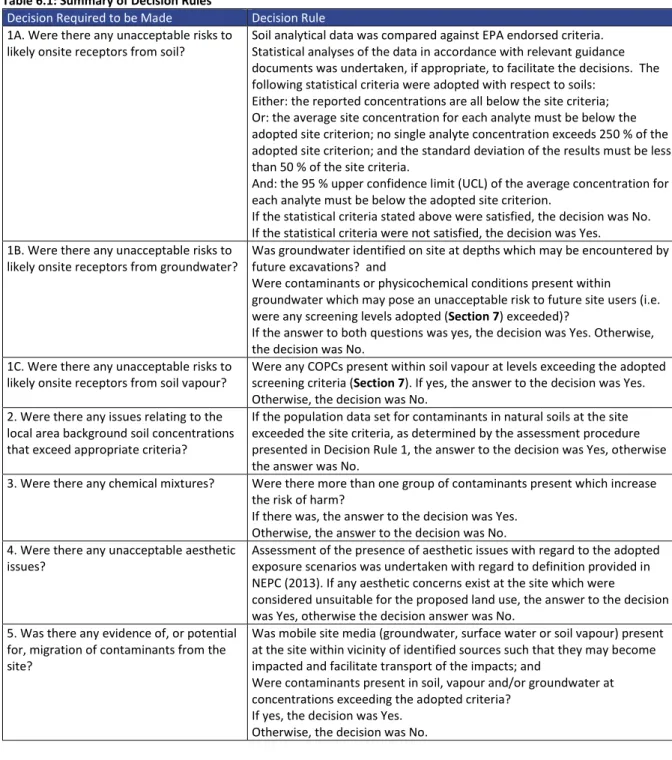
Field Investigation Methodology
- Soil
- Groundwater
- Soil Vapour
Prior to commencing sampling activities, disposable sampling equipment, including the sampling trowel, was cleaned with a water/detergent spray, rinsed with water, and then air-dried. The equipment was then inspected to ensure there was no visible soil, oil, debris or other contaminants before work began. A fresh length of disposable nylon tubing was attached to the top of the steam pin or temporary probe;.
A PID and Landfill Gas Meter (LFG) was connected to the nylon tube, via a three-way valve, and ground gas from the bottom plate was withdrawn through the assembly. Subsequently, an isopropanol-soaked cloth was applied to the shroud and the concentrations of VOCs in the shroud and subplate environment were monitored. An airtight glass container filled with lab-prepared purified carbon-based absorbent media was placed in the vapor probe;
After sample collection, the carbon media were sealed and transferred to a secure box for sample preservation prior to and during shipment to the testing laboratory; and.
Laboratory Analysis
The vapor probe assembly was then enclosed in a housing, with a nylon tube protruding from the top of the housing to facilitate access for cleaning. When spikes in VOC concentrations are recorded in the environment below the slab, this would indicate a possible intrusion of atmospheric gas during sampling; and. The lid and cloth soaked in isopropanol were left in place for the duration of sampling.
A calibrated low-flow pump was placed on the back of the glass vessel and turned on;. Subplate gases were withdrawn at a rate of approximately 200 mL/minute, over a period of 30 minutes. Concentrations of VOCs in the shroud and nylon tubing were measured periodically during sampling with a PID to monitor for possible atmospheric interference.
JBS&G Australia Pty Ltd Rev 1 26 and potentially affected AEC media was achieved by distributing the analytical testing balance.

Assessment Criteria
Regulatory Guidelines
Assessment Criteria
- Soil Criteria
- Water Assessment Criteria
- Soil Vapour Assessment Criteria
Site-specific EIAs were derived as shown in Table 7.1, using data from site soils presented in Table A. The EIA criteria apply to different soil types at the site: backfill and natural material. Favorable reuse of groundwater is considered unlikely, but as a conservative guideline, health and aesthetics criteria were adopted based on the Australian Drinking Water Guidelines (NHMRC 2021), modified to account for incidental exposure in accordance with NHMRC (2008).
To assess the potential risk of migration of contaminated groundwater from the site to Strangers Creek, reference was made to ANZG (2018) default values for freshwater ecosystems as set out on the ANZG website18. Given the urbanized nature of the host water body, criteria for the protection of 95% of the species have been adopted. The most sensitive land use was adopted to control for soil vapor chemicals.
This land use is considered to be adequately protected against any other possible land use scenarios that may be adopted once the development details are finalised.

Quality Assurance Quality Control
QA/QC Discussion
- Precision
- Accuracy
- QA/QC Conclusions
The RPDs for intra- and inter-laboratory duplicates are considered to be the result of heterogeneity in the sampled material. The elevated RPD results are not considered to have adversely affected the data set for the purpose of making decisions identified in Section 6.1.2. Review of DQIs indicates that the DQO has been achieved in terms of precision of the data set.
Surrogate peak recoveries were generally within the acceptable range of 70-130 % for primary samples analyzed, except for the following sub-recoveries. These deviations from the optimal criteria were not considered to have an impact on the conclusions of this assessment as no organic compounds were reported within one order of magnitude of the assessment criteria for the samples to which the sub-recoveries relate. The laboratory provided no explanation for the under-recoveries, as the recoveries were within the NATA acceptable limits of 50-150.
Based on the results of the QA/QC program in the field and in the laboratory, the data is of an acceptable quality to draw conclusions regarding the environmental status of the site.
Results
Field Observations
- Lithology and Soil Observations
- Groundwater Field Observations
Laboratory Analysis Results
- Soil Contaminant Analytical Results
- Asbestos Identification
- Soil Vapour Field Screening
- Soil Vapour Analytical Results
Temporary sub-slab vapor probes were installed at seventeen locations to a maximum depth of 0.3 m bgl (Figure 4B). The field sheets for soil vapor screening are shown in appendix O. Table 9.3 Summary of soil vapor screening. Soil vapor samples from eight selected soil vapor probes were analyzed for VOC concentrations.
No VOCs were detected in soil vapor above the laboratory limit of detection in any of the analyzed samples.
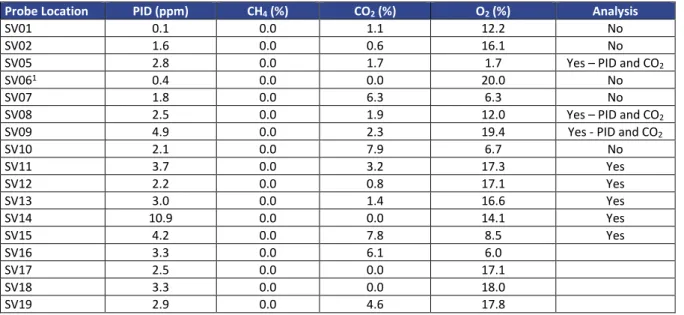
Discussion
Potential Risks to Future Onsite Receptors
Background Contamination
Chemical Mixtures
Aesthetic Issues
Potential Offsite Migration of Contaminants
Site Management Strategy
Conclusions and Recommendations
Limitations

